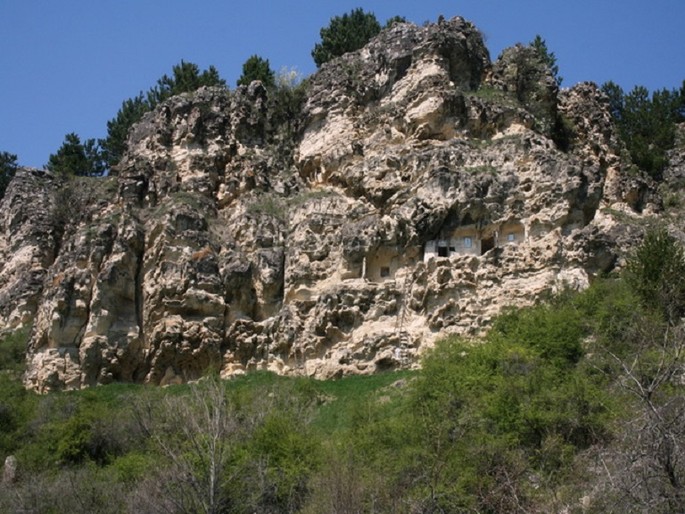Naeni is a settlement located near Buzau in the south-western part of the Istrita Hill with origins in the Stone Age as evidenced by the stone tools (chisels, hammers) found in the hill caves. Since ancient times, the activities of the inhabitants are stone chiseling, the extraction of stone blocks of the quarry, agriculture and wine making.
An earth road between the vineyards goes to the Manafului Cross, an impressive monument made from one single block of stone. The monument comprises a cross and four poles fixed on a horizontal beam surrounding the cross. The year 1846 is written on the back as well as the name of the ruler Gheorghe Dimitrie Bibescu.
Going further on to the stone quarry, we will find the Church from One Stone, built from travertine of Naieni. The uniqueness of this church is given by the iconostasis sculpted in limestone. The icons of the church porch are also impressive that were made as low relief from ceramics painted in Byzantine style.
Nearby, on the peak of Istrita Hill, in a magnificent landscape, several prehistoric caves are located in which tools and weapons were discovered as well as rupestral paintings, ash and relics from Dacian times and a shrine erected during the beginnings of Christianity.
To the north, on the Tigoarea Hill, on the border of the stone quarry, many works sculpted in stone are to be found. These were made by those who attended the sculpture camps organized here. The works of the camp entrance forms the sculptural assembly called Dacology. Another work found in the camp is the “Stone’s Voice”, representing a girl singing from an alpenhorn.
Going on the trail to the peak of Istrita Hill, we reach a glade with a small forest and white cross on which it is written “The monastery of Ambrozie the Hermit”. Here we have the best sight of the southern wall of the Soimilor Hill and, to the right, the rupestral dwelling called “Ambrozie Skete” which was declared a world heritage site. Here, the monk Ambrozie lived in solitude until 1980 when he passed away.
Sources/photos:





























